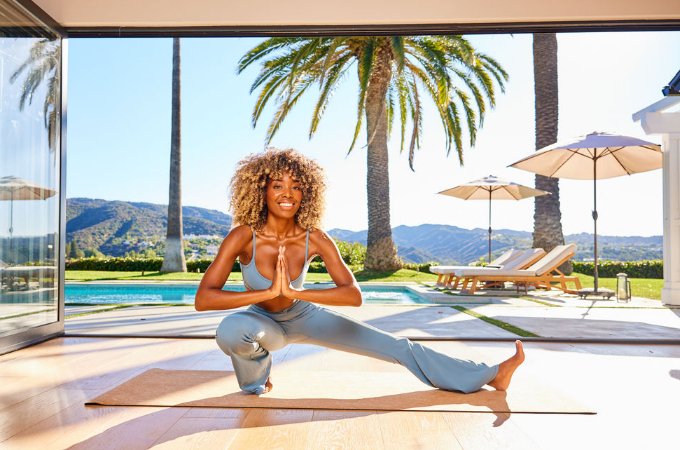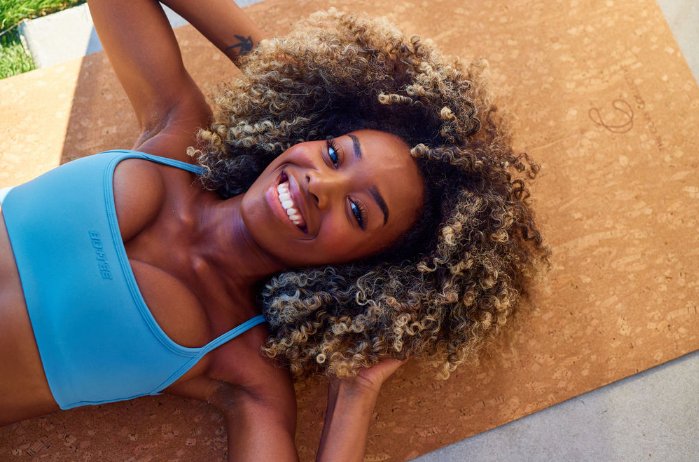Introduction:
Embarking on the journey of yoga can be a transformative experience, especially for beginners seeking balance, strength, and inner peace. Yoga, with its rich history and profound benefits, offers more than just physical exercise; it is a holistic practice that nurtures the mind, body, and soul. Imagine starting each day feeling energized, focused, and calm, or ending it with a sense of tranquility and relaxation. Whether you are looking to enhance your physical fitness, manage stress, or cultivate mindfulness, yoga has something to offer. This guide will walk you through the essentials of starting your yoga practice, providing you with the knowledge and tools to transform your life from the very first step onto the mat.
Understanding the Basics of Yoga
What is Yoga?
Yoga is an ancient practice that originated in India over 5,000 years ago. It combines physical postures, breathing exercises, meditation, and ethical principles to promote physical and mental well-being. For beginners, yoga may seem intimidating, but it is a versatile practice suitable for all fitness levels and body types. Starting with a basic understanding of what yoga is can help you appreciate its holistic benefits.
Benefits of Practicing Yoga
Practicing yoga offers numerous benefits, especially for beginners. Yoga improves flexibility, strength, and balance, which are crucial for overall health. It also reduces stress, enhances mental clarity, and promotes relaxation. By incorporating yoga into your routine, you can transform your life physically, mentally, and emotionally. The benefits of yoga extend beyond the mat, influencing your daily habits and mindset.
Different Styles of Yoga for Beginners
There are various styles of yoga, each with unique characteristics. Beginners often find Hatha yoga to be a good starting point, as it focuses on basic postures and breathing techniques. Vinyasa yoga is another popular style that links movement with breath, offering a more dynamic practice. Restorative yoga, on the other hand, involves gentle poses and extended holds, making it ideal for relaxation and stress relief. Exploring different styles helps you find the yoga practice that best suits your needs.
Preparing for Your Yoga Journey
Choosing the Right Yoga Gear
Having the right gear can enhance your yoga practice. Beginners should invest in a good-quality yoga mat that provides adequate cushioning and grip. Corkcollective can be one of your options.Comfortable, stretchy clothing is essential to allow freedom of movement. Yoga blocks, straps, and blankets are helpful props that assist in achieving proper alignment and support. Choosing the right gear ensures a safe and enjoyable yoga experience.
Setting Up Your Practice Space
Creating a dedicated practice space at home can significantly impact your yoga journey. Choose a quiet, clutter-free area with enough room to move comfortably. Ensure good ventilation and natural light, if possible. Personalize your space with calming elements like candles, incense, or plants to create a serene environment. A well-organized practice space makes it easier to establish a consistent yoga routine.
Finding Beginner-Friendly Yoga Classes
For beginners, joining a yoga class can provide guidance and motivation. Look for beginner-friendly classes at local studios or online platforms. In-person classes offer the advantage of personalized instruction and adjustments from the teacher. Online classes provide flexibility and convenience, allowing you to practice yoga at your own pace. Whether in-person or online, finding the right class helps you build a strong foundation in yoga.
Essential Tips for Beginner Yogis
Starting with Simple Poses
Beginners should start with simple yoga poses to build confidence and prevent injury. Basic poses like Mountain Pose (Tadasana), Downward-Facing Dog (Adho Mukha Svanasana), and Child's Pose (Balasana) are excellent for beginners. Focus on proper alignment and breathing as you practice these poses. Starting with simple poses allows you to gradually increase your strength and flexibility.
Mountain Pose (Tadasana):
-
Starting Position: Begin by standing at the top of your mat with your feet hip-width apart. Distribute your weight evenly between both feet, with your toes pointing forward.
-
Alignment: Engage your thighs by lifting your kneecaps slightly and tucking your tailbone slightly under to lengthen your lower back. Keep your spine long and straight, with your shoulders relaxed away from your ears.
-
Arms: Allow your arms to hang naturally by your sides, with your palms facing forward. Keep your fingers active and spread them wide.
-
Core Engagement: Draw your navel gently towards your spine to engage your core muscles. This helps to stabilize your torso and maintain balance.
-
Breathing: Take slow, deep breaths in and out through your nose. Feel the expansion of your ribcage with each inhale and the release of tension with each exhale.
-
Alignment Check: Ensure that your body is aligned from head to toe. Imagine a string pulling you up from the crown of your head, lengthening your spine and elongating your entire body.
-
Focus and Relaxation: Soften your gaze and relax your facial muscles. Bring your attention to the present moment, focusing on the sensation of standing tall and grounded like a mountain.
-
Hold: Stay in Tadasana for several breaths, maintaining a steady and relaxed posture. Feel the connection between your feet and the earth beneath you.
Tadasana may seem simple, but it's a powerful pose for developing mindfulness, stability, and proper alignment, both on and off the mat.
Downward-Facing Dog (Adho Mukha Svanasana):
-
If you have carpal tunnel syndrome, we recommend you avoid this pose. Planks are known to be a great move for building core strength and toning your abs, while also strengthening your arms, wrists, and spine.
-
You'll want to start with your hands and feet on the floor, glutes pointing up (downward-facing dog). Inhale and pull your body forward. Your arms should be perpendicular to the floor, with your shoulders directly over your wrists, keeping your torso parallel to the floor.
-
Press your outer arms in and your shoulder blades back. Now, move your collarbone away from your chest, push your thighs toward the ceiling, and your tailbone toward your heels.
-
Keep your neck soft as you look at the ground.
-
Hold for 45 seconds.
Child's Pose (Balasana):
This stretch doesn't have the same medical benefits as other poses, but it's great for improving power and sensation in your hips, and it also stretches the groin and back of your spine.
-
Start lying on your back with your knees bent on your abdomen and your hands holding the outside of your feet.
-
Now open your knees so they are slightly wider than your torso and pull your knees toward your armpits.
-
Make sure your ankles are facing your knees and bend your heels. Press your feet against your hands and use your hands to create resistance.
-
Stay in this position for one minute.
Incorporating Breathing Techniques
Breathing is a fundamental aspect of yoga. Beginners should learn basic breathing techniques like Ujjayi breath (Victorious Breath) and diaphragmatic breathing. These techniques help you connect breath with movement, enhance relaxation, and improve concentration. Incorporating breathing techniques into your practice deepens your yoga experience and promotes overall well-being.
Developing a Consistent Practice Routine
Consistency is key to reaping the benefits of yoga. Beginners should aim to practice yoga regularly, even if it's just a few minutes each day. Set realistic goals and create a schedule that fits your lifestyle. Over time, gradually increase the duration and intensity of your practice. Developing a consistent routine helps you establish a lasting yoga practice and enjoy its transformative effects.
By understanding the basics, preparing adequately, and following essential tips, beginners can successfully embark on their yoga journey. Embrace yoga with an open mind and heart, and watch how it transforms your life.
Conclusion:
As you embark on this transformative path, remember that consistency is key. Regular practice, even in small amounts, can lead to significant improvements in your overall well-being. Embrace yoga with an open mind and heart, and watch as it enhances your life in ways you never imagined.
To help you get started, we're offering a special discount on yoga mats and gear for our readers. Use the code BestCorkYogaMat at checkout for 15% off your first purchase. Investing in quality equipment can make your practice more enjoyable and effective. Start your yoga journey today and transform your life, one breath at a time.





Leave a comment
This site is protected by hCaptcha and the hCaptcha Privacy Policy and Terms of Service apply.